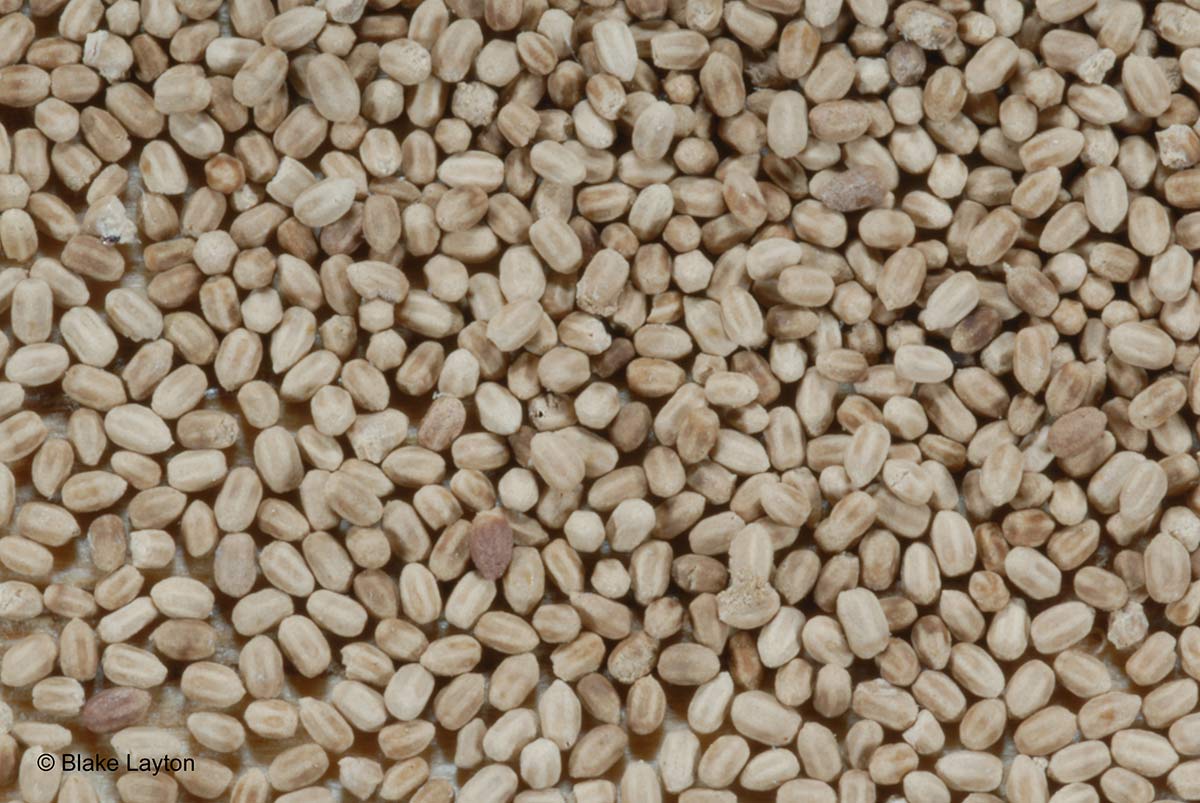Drywood Termite Fecal Pellets, Vol. 6, No. 21

Drywood Termite Fecal Pellets
Several species
Order: Blattodea (Isoptera)
Family: Kalotermitidae
“What do you keep spilling on this countertop, Joe? This is the third time I’ve cleaned this up.”
“I thought you were spilling something. I’ve cleaned it up several times myself. Maybe it is coming from some kind of insect. Let’s send a sample up to Mississippi State and see if they know what it is.”
As their name suggests, drywood termites live in dry wood. This means they must be very good at conserving moisture, and they are extremely stingy with the amount of water they lose with their feces. When viewed under magnification, the fecal pellets of drywood termites have a distinct, 6-sided, oblong shape and are relatively uniform in size, though color will vary from light to dark depending on type of wood and other factors. When viewed from normal, eyeball distance, these fecal pellets look like dust or debris, and are often not recognized as a sign of an active termite infestation.
So how do these tiny termite turds come to be on Joe and Linda’s nice marble countertop? Drywood termites are fastidious; they don’t want a lot of useless fecal pellets lying around in their galleries. Their solution to their sewage disposal problem is to cut a few strategically placed holes, known as kickout holes, to the outside of the wood in which they are living, carry the pellets to these holes, and push them out. If the kickout hole is only a few inches above the surface on which they fall, the discarded pellets may form a neat little, attention-getting pile. But if the kickout hole is higher up, the falling pellets tend to bounce and scatter, making them easy to mistake for dust or debris.
Drywood termites are not very common here. Less than one percent of the termite infestations reported in Mississippi involve drywood termites. But when drywood termite infestations occur, it is critical they be properly identified, because the treatments used to control native subterranean termites and non-native Formosan termites will not control drywood termites.
At least three species of drywood termites occur in the state: southeastern drywood termites, western drywood termites, and West Indian drywood termites, but all three are rare. Infestations usually occur when some item of infested wood is brought into the building. This could be something like a wooden bowl or statue purchased on an overseas trip; a piece of antique furniture that came from an area where drywood termites are more common; or some type of reclaimed wood, such as a fireplace mantel or antique door.
Control: Controlling drywood termites can be as easy as discarding and destroying an infested item or as complex and costly as having a building tented and fumigated. The first method is only effective when the infestation is isolated to a single piece of wood or furniture. Having a piece of furniture that is too valuable to destroy chamber fumigated is an intermediately priced option (if you can find a company that does such treatments). But if the infestation is extensive enough that drywood termites are swarming from multiple places in the building, tent fumigation is the only option. Fumigation is effective, but the bill may have five digits on the dollar side of the decimal place. See appropriate sections of the MSU Termite Website for more information.
Blake Layton, Extension Entomology Specialist, Mississippi State University Extension Service.
The information given here is for educational purposes only. Always read and follow current label directions. Specific commercial products are mentioned as examples only and reference to specific products or trade names is made with the understanding that no discrimination is intended to other products that may also be suitable and appropriately labeled.
Mississippi State University is an equal opportunity institution.

